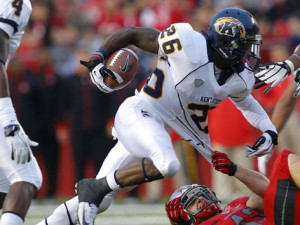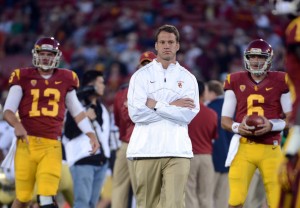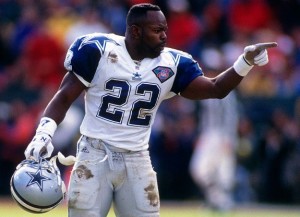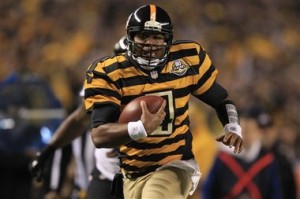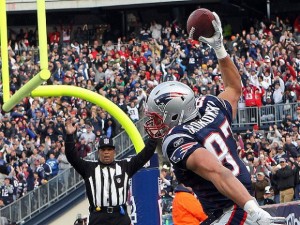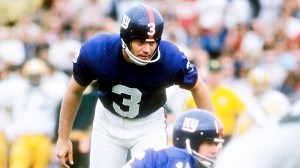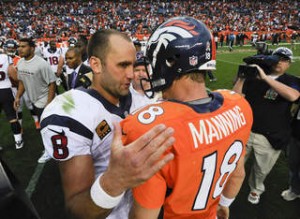There are six conference championship games this weekend. Here’s a short preview breaking down this weekend’s action. All times Eastern.
MAC Championship (Detroit, MI)
Friday, 7PM: Kent State vs. Northern Illinois (-6.0)
Weeknight MACtion doesn’t get better than this, and this is one of just two conference championship games featuring two 11-1 teams. The SRS hit the nail on the head, telling us that NIU is 6.2 points better than Kent State on a neutral field. The stars here are Northern Illinois’ quarterback Jordan Lynch and KSU’s running back Dri Archer. Lynch leads the MAC in Y/A, AY/A, TD/INT Ratio, and Passer Rating, and oh by the way leads the conference with 1,611 rushing yards and ranks third with 16 rushing touchdowns.Archer, meanwhile, leads the MAC with 1,795 yards from scrimmage has scored 18 touchdowns. But here’s the killer stat: he averaging 9.7 yards per carry, the highest average of any player with at least 100 carries since at least 2000. In his spare time, Archer averages 38.2 yards per kick return, the highest average of any player with at least 12 returns since at least 2000.
Kent State lost to Kentucky, which didn’t seem odd at the time — because we’re talking about Kent State — but looks absurd in retrospect. The Golden Flashes received an SRS grade of 4.4 for that game. Northern Illinois’ one loss was on opening weekend against Iowa, an 18-17 loss in Chicago where NIU led most of the game.
My pick: NIU -6
Pac 12 Championship (Stanford, CA)
Friday, 8PM: UCLA @ Stanford (-8.5)
If we looked at the SRS standings from a week ago, we would set this line at Stanford -5.6. But the current projected SRS spread would be 8.6, mirroring the actual line. So how much do we take away from last week’s game, where Stanford had everything to play for and UCLA seemed content to walk away unscathed?
It’s tough to say. Jim Mora’s Bruins have been an exciting team to watch this year, but Stanford’s defense is well-equipped to stop any rushing attack. Runing backs Johnathan Franklin (UCLA) and Stepfan Taylor (Stanford) have been workhorse backs, each rushing for 11 touchdowns, ranking third and fourth in the conference in rushing, and chipping in in the passing game. And while freshman quarterback Brett Hundley has been outstanding for UCLA, I have a feeling he’s going to wind up very frustrated on Friday night.
My pick: Stanford -8.5
CUSA Championship (Tulsa, OK)
Saturday, 12PM: Central Florida @ Tulsa (-1.5)
These are the two best teams in Conference USA, but that isn’t saying too much. The SRS puts UCF as 3.1 points better than Tulsa, so this game should be a push in Oklahoma. The Golden Hurricane handed UCF their only conference loss two weeks ago in Tulsa, but UCF has the more impressive resume this year losing to just Ohio State and Missouri out of conference. Tulsa lost to Iowa State and Arkansas, and just lost on the road to SMU. So why am I going with the Golden Hurricane? Because Tulsa has gone 16-2 at home the last three years, with the only losses coming to teams ranked, at the time, 8th in the country (Oklahoma State and Houston, in 2011). The final score two weeks ago was misleading, as Tulsa outgained UCF by well over 100 yards rushing, average 1.9 more yards per pass, and won the first downs battle, 26-14.
My pick: Tulsa -1.5
SEC Championship (Atlanta, GA)
[continue reading…]

